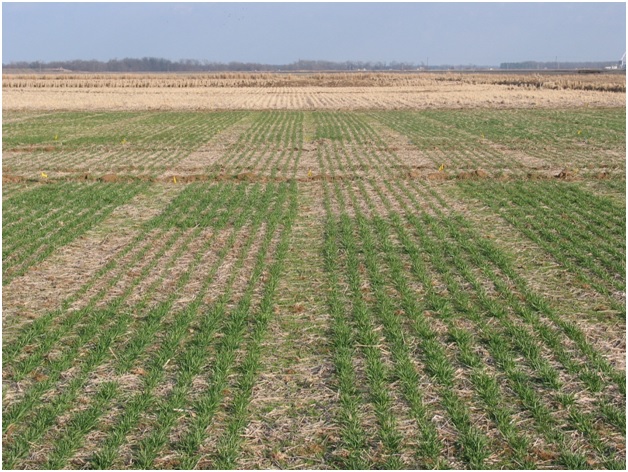Source: University of Arkansas
By Trenton Roberts
Oct. 18, 2013 — Fall-seeded wheat generally does not require N fertilizer for establishment. Fall-applied N or pre-plant N can aid in the establishment of wheat under specific planting conditions and crop rotations, but should be managed on a case-by-case basis.
Previous research has suggested the need for fall-applied N to help compensate for the large amount of crop residues produced by corn and grain sorghum, but recent data indicates that this added N may not be as beneficial as once thought and can potentially promote disease and lodging pressures later in the growing season. Incorporation of a large amount of crop residue from a summer grain crop may lead to immobilization of residual soil N.
For crops other than flood-irrigated rice, fall-applied N has shown little or no benefit on wheat yield when late-winter-applied N is properly managed. Pre-plant or fall-applied N can increase biomass and aesthetics of wheat following summer grain crops, but has little influence on final wheat yields under well-established, properly managed production practices.
There is usually adequate inorganic N available in the soil for wheat following well-fertilized corn and grain sorghum crops. The University of Arkansas Division of Agriculture recommends fall-applied N only when winter wheat follows flood-irrigated rice in the crop rotation (Photo 1).
Information on the need for fall-applied N following furrow-irrigated (no flooded) rice is not available, but is probably similar (no major benefit) to wheat following corn or grain sorghum. Wheat growth following flood-irrigated rice is usually poor for several reasons. First, following flood removal previously flooded soils tend to have low amounts (< 10 ppm) of inorganic N present.
The large amount of rice straw and roots (even following burning) that is produced by rice may also immobilize soil inorganic-N for an extended period. Finally, the anaerobic conditions created by flooding limit P availability too and inhibit vigorous wheat growth in the absence of proper fertilization and straw management. The combined effect of the low N and P availability is visually evident when the paddy area (poor growth) in the field is compared to the area where the rice levees (vigorous growth) had been located. Thus, it is recommended that 40 to 50 lb N per acre be applied in the fall when wheat immediately follows rice in the rotation sequence. Other considerations for pre-plant or fall-applied N based on planting date and grazing for grain are listed below.
Pre-Plant N Considerations
- Late-planted wheat should consider 30 lb N per acre pre-plant.
- Dates for late-planted wheat are October 15 North of Interstate 40 and November 1 South of Interstate 40.
- Wheat for grazing and grain should consider 60 lb N per acre pre-plant
- Wheat following flood-irrigated rice in the rotation should receive 40 to 50 lb N per acre pre-plant or shortly after planting or crop emergence.
The University of Arkansas Division of Agriculture Soil Fertility Team is currently revisiting and researching the recommendation for fall-applied N on late planted wheat. Fall N is essential for tiller development and stand establishment prior to winter dormancy and can impact wheat yields.
Many states have fall N recommendations for late-planted wheat and they vary greatly from state to state. Residual soil N in the form of nitrate has been used as an indicator for wheat response to fall-applied N. Research from other states has indicated that wheat planted on soil with nitrate levels < 10 ppm generally have a positive yield response to fall-applied N. Further research is necessary under Arkansas growing conditions to determine more specific guidelines for fall-applied N to late-planted wheat.
 Photo 1 The benefit of fall-applied N to the growth of winter wheat following flood-irrigated rice in the rotation. |






Post a comment
Report Abusive Comment